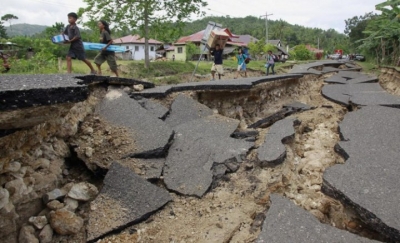
According to the plate tectonics theory, the Earth’s surface consists of huge, rocky plates that move slowly past one another. Known as tectonic plates, some of these carry continents, others the ocean floors and some a combination of the two. Most earthquakes take place along the boundary between two plates. Propelled by heat-driven currents in the softer rock beneath them, the plates constantly pull apart, collide, or grind against each other. When the strain becomes too great, the pent-up energy ruptures the rocks and creates a fracture known as a fault. This sudden release of energy unleashes the ground-shaking vibrations that constitute an earthquake.
